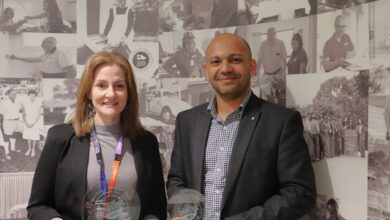Paperwork ‘tested’ for real at ED
At 12.51pm local time on February 22, Christchurch was rocked by a magnitude 6.3 earthquake. The city was devastated, many were dead, more were injured and medical teams faced a situation "as bad as it could get". Fiona Cassie reports.
On February 22 Kate Cooper was catching up on her paperwork on disaster management. As the first earthquake shock died down the associate clinical nurse manager of Christchurch Hospital's ED reached for the major incident plan information, not knowing how tested it would shortly be.
"I naively went down to my disaster cupboard and got three boxes of disaster kits - enough for about 70-odd patients."
Based on the September quake she thought it would be enough.
But then the patients started arriving on roofs of cars, backs of motorbikes, carried on ladders, gates and doors. About 120 patients arrived in the first hour or so and the disaster document kits, with their pre-loaded hospital numbers to pin onto patients, were soon rushing out in great numbers.
With part of the waiting room ceiling collapsed and patients still arriving, chairs were quickly taken to the car park where triage was carried out. And word started filtering through about the scale of damage in the inner city. This added a new stress for Darfield-based Cooper whose son was at an inner city college. It was five long hours before she knew her son was okay.
As for the department itself, she said within about 30 minutes post-quake a new order was in place, with experienced staff directing the car park triage area and the assessment and resuscitation area.
Power kept fluctuating, the road outside was being used as a helipad, part of the ambulance bay car park had sunk and abandoned cars blocked access, but the ED kept functioning.
Victims were arriving with crush injuries and amputations - dramatic injuries that the hospital could handle clinically but were mentally challenging with the ongoing aftershocks.
"I've seen a lot of trauma and death but not while thinking my child may be dead as well."
Cooper said one of the strongest impressions she took away from the quake was that staff could easily have just disappeared home - and no-one could have said a word against them - but they all stayed. Also the staff who poured back into the ED and the complete strangers who came to help.
"Every man and his dog came to help us." She especially recalls one medical student, who never got to touch a patient but kept collecting and emptying rubbish tins for hours. Other students made up drug kits or escorted relatives to find their family members.
Cooper said the September quake had been treated as a "learning experience" and she had worked with hospital emergency planner Bruce Hall on improving the ED's incident plan. So ED had a lot more head torches, hard hats and other equipment "just in case" and had put together updated boxes of disaster document kits.
She said post-September 4th, unsurprisingly, interest had grown in emergency planning and the department had a series of training exercises on coping with paperwork and relocating patients in a disaster situation.
One area focused on was tracking patients - and the pre-loaded numbers worked well when computer access was fluctuating - but the ED still struggled with patients arriving through unofficial entrances as people urgently sought care for badly injured victims. This was an area the ED was going to work on in the future.
Cooper said it was the first time she had nursed in an incident when the hospital was in crisis as well as the city and staff were fabulous, working long hours. She herself had not headed home until after a 17-hour day. She said the next few days were less physically demanding though were mentally challenging and tiring, so managers tried to double-up staff to reduce pressure.
Support continued in the days that followed, with gifts of food, new undies and goodwill messages pouring in from across the country, plus the out-of-town nurses and doctors working from an improvised campervan village in Hagley Park.
A month after the quake and three traumatic funerals later Cooper says the department is expecting challenging times ahead for post-quake Christchurch.
Most staff had taken two or three days quake leave but many still faced damaged homes, lack of services, personal issues and now new school hours affecting their lives.
"And most of us who used to keep our cell phones in our bags now tend to have them in our pockets."
Email: [email protected]




